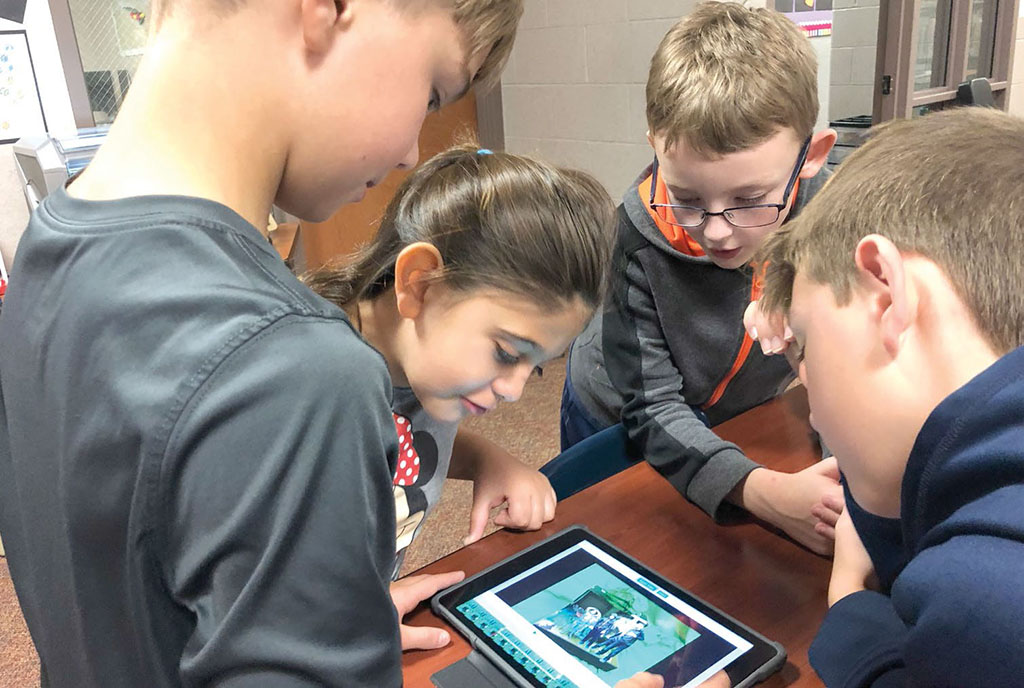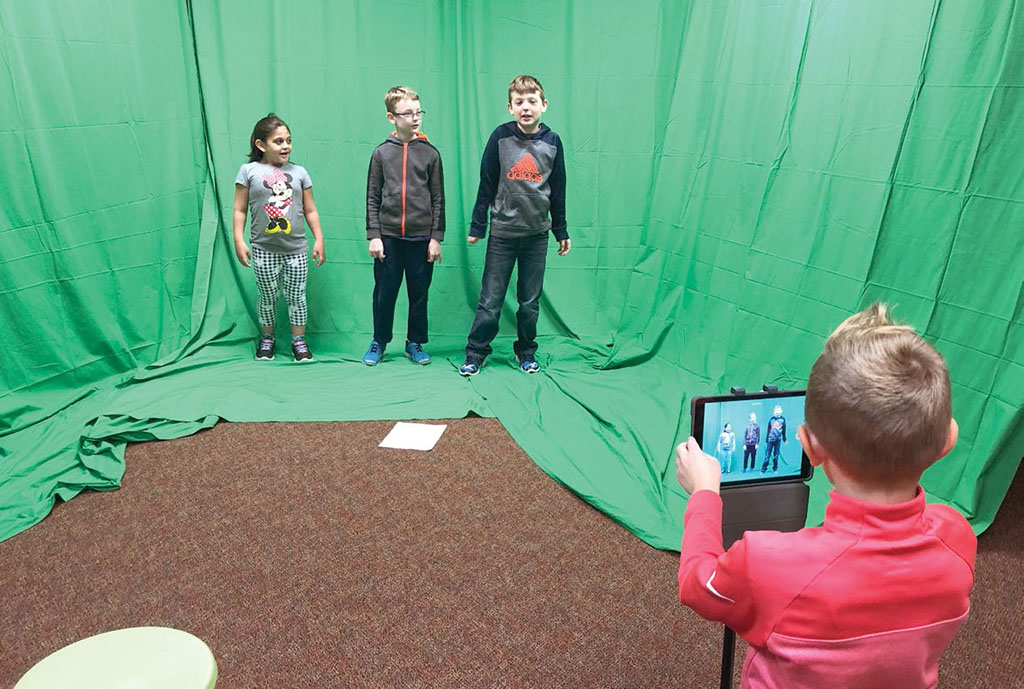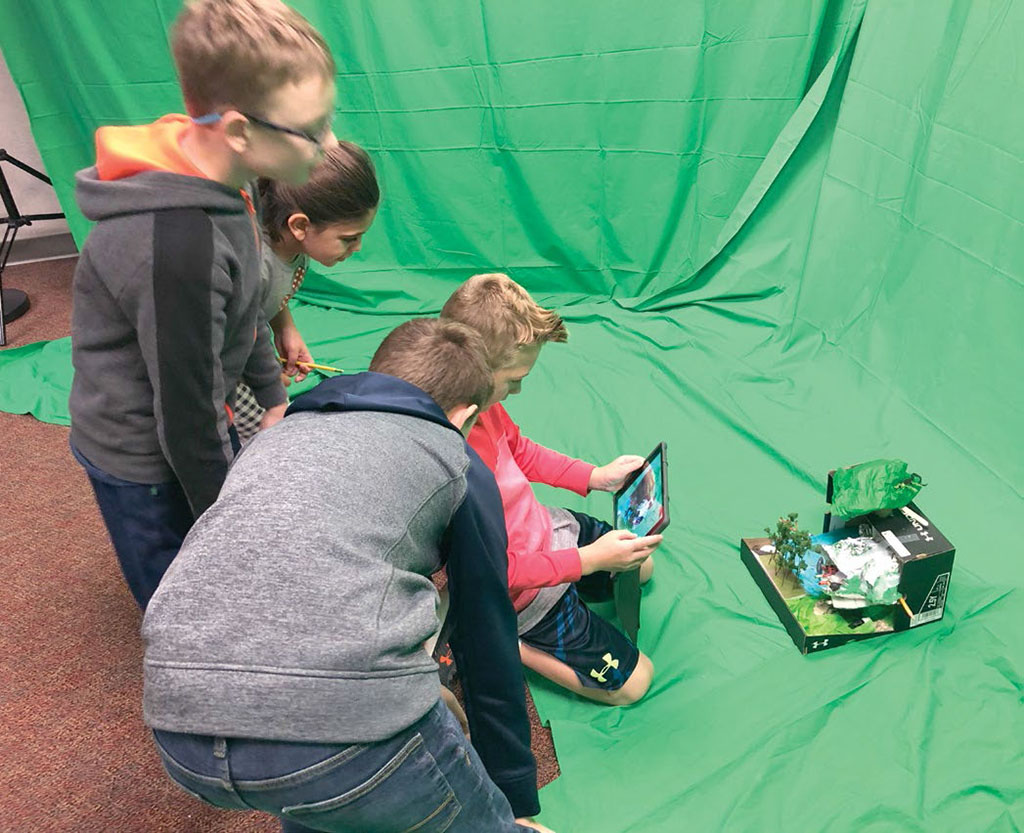How to Keep Students Engaged With “Wow” Moments
Teacher-librarian and school library media specialist Dayna Derichs wants every one of the 600 pre-K–fifth-grade students at Wheeler Elementary to have opportunities to experience the “wow” moments that happen when technology transforms learning.

Teacher-librarian and school library media specialist Dayna Derichs wants every one of the 600 pre-K–fifth-grade students at Wheeler Elementary to have opportunities to experience the “wow” moments that happen when technology transforms learning.
Wheeler Elementary, part of Millard (NE) Public Schools in Omaha, has a growing fleet of iPads and Belkin keyboards as well as Apple TV and wireless projectors in every classroom. Teachers share devices as needed and Derichs spends time team teaching with each grade level as they move up the SAMR model towards redefining learning with technology. She’s teaching students, but she’s also modeling for teachers how to use technology—and together they’re discovering new and creative ways to use tech tools.
CREATING “WOW” MOMENTS

“When I show students how to split their screens so they can skim and scan, copy and paste notes and cite sources as they go, they’re happy to read more,” Derichs says. “We use NoodleTools for research, and then when we export their sources to a Google doc and they see their bibliography immediately alphabetized, they’re amazed.”
Last year, Wheeler Elementary students made marshmallow slingshots to learn about Newton’s three laws of motion. The students took pictures and burst shots to record motion and velocity and created a keynote presentation to show their learning using the Clips app. “There was such great synergy as the students used technology to record data and communicate their findings—they didn’t stop to eat the marshmallows and they didn’t even realize they were learning!” says Derichs.
This week, third-grade students learning about the ecosystem made shoebox dioramas, Derichs says, then took it to the next level with the Green Screen app. After creating an example together, she and the teacher draped the computer lab with green fabric. “The kids had scripts with their research,” Derichs says, “But as soon as we hit ‘record,’ they started sharing all of this information they’d learned that wasn’t in their notes—it was all in their heads.” She laughs. “They have enthusiasm and a deeper understanding because they know they’ll be on stage and in the lights. Many of them tell me they want to be YouTubers.”
THE ULTIMATE EQUALIZER
Tools and ideas to transform education. Sign up below.

“Technology is the ultimate equalizer,” says Derichs, who also works with some classes of ACP students. “There are no more haves and have nots. These tools help break down barriers and inhibitions.”
In one ACP class, she says, “We draped green fabric over a student’s wheelchair so on the screen it looked like she was in the desert talking about what she’d learned. During the Winter Olympics, another wheelchair-bound student showed up on the screen in a bobsled.” All of these moments are also really fun to share with parents, Derichs says. “It blows their minds—and brings some tears.”
CONNECTING TO THE REAL WORLD
Using ChatterPix, Seesaw, and a retro phone set plugged into an iPad, therapy dogs can talk. With Google Expeditions, kids can visit the Aztec pyramids. With tools like Seesaw and Clips, students can make “real life” advertisements for the school book fair for their parents to see.
The possibilities are endless and exciting, and Derichs is always on the lookout for fun new ideas and ways to bring concepts and real-world applications into the classroom. When she’s preparing lessons, she listens to the teachers and works with them to create “wow” moments. “I find a lot of ideas on Twitter,” she says. “Sometimes it’s a year or more before I find the perfect application for an idea.” Having patience and reminding students (and herself) that it’s OK to make mistakes are important to creating a culture of learning and inquiry, Derichs says.
MINIMIZING DISTRACTIONS
Even with plenty of “wow” moments, students are just like adults when it comes to the tempting distractions of technology. Derichs has found that ZuluDesk, now Jamf School, is one of the best ways to keep students engaged. “Once I set up the lesson and make all the apps except the ones we’re using disappear, the level of anxiety goes down 100 percent,” she says. “They can’t do anything else and it’s crazy good in all kinds of ways. It can be used for a whole class or for an individual student, and no one else has to know. It allows them to stay focused. We give them tools that we as adults struggle to use—why do we expect eight-or nine-year-olds to be any different?”
